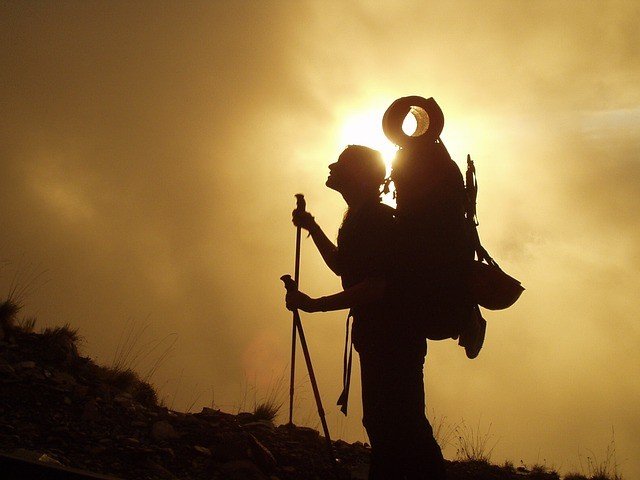

Do You Have to Use Trekking Poles?
If you were to get in a time machine and go back to the ancient days of the early 2000s, most of the hiking gear you’d see would be the same as today. The same carabineers, the same Gore-Tex boots, the same little propane camp stoves. But you’d see very few trekking poles.
Trekking poles have been around ever since some caveman named Thag decided to lean on a stick while he was walking. But their current popularity was spurred by a 1999 study from the Journal of Sports Medicine. This study showed that the use of trekking poles can reduce knee strain by more than 25 percent.
Hikers took notice, and since then the trekking pole business has been booming. But better joint health is only one benefit of using them. Let’s look at a few more advantages.
Trekking Poles as a Safety Tool
Perhaps the most obvious benefit of a good set of trekking poles is that they provide two extra points of contact with the ground. For most people, this isn’t necessary on flat ground, but most hiking involves going up and down hills, crossing rivers, and navigating other obstacles. Why risk getting hurt when you can have some poles for extra support?
You can also use them as a probe. Not sure if that rushing creek is three inches deep, or three feet? Give it a poke, and find out. Are you about to walk over a dense snowbank, or is it just a snow bridge concealing a void? Stick it with your trekking pole to investigate.
One other safety application is if you end up encountering a bear, a bobcat, or another potentially dangerous animal. We all know what you’re supposed to do when something wants to eat you; stare the animal down, make lots of noise, make yourself as big as possible, and throw things at it if necessary. Waving your poles in the air will make you seem bigger than you otherwise would. And if it turns out that you need to throw something, you’ve got something right in your hand.
Uses Around the Camp Site
When discussing the pros and cons of trekking poles, people will often talk about the added weight. Depending on your equipment, this can indeed be an issue. However, if you’re pitching a free-standing shelter, your trekking poles can double as tent posts, so there’s basically no net change in your weight.
Trekking Poles For Your Comfort
Another advantage of trekking poles is that they make your hiking or backpacking experience more comfortable. If you’re using them as intended, you’ll be pushing off with each step. This takes some of the weight of your backpack off your legs, so maybe they won’t feel like Jell-O at the end of the weekend.
When you stop to take a breather or check your map, you can lean on your poles. It’s not quite as relaxing as sitting down on a log, but it beats the heck out of standing if there’s nothing clean or supportive enough to sit on. Not only that, but you can use your trekking pole for pushing aside obstructions. Brambles, blackberry bushes, and low branches will no longer be an obstacle to your enjoyment.
Trekking Poles For Speed and Efficiency
A well-fitted trekking pole should be sized so your elbow is at a right angle when it’s planted in the ground. This height makes it ideal for pushing off with each step, much like you’d push while you’re cross-country skiing. And that’s how a lot of hikers are using them. This makes hiking easier and more energy efficient since you’ll be using all four limbs to move forward.
You can also use trekking poles to keep pace. By moving them in rhythm, you’ll keep yourself from slowing down unintentionally. On an uphill slope, they’ll assist you in getting over the crest. And on a downhill slope, you can use them to stop yourself from walking too quickly and losing control.
In Closing
Before we walk off into the sunset, there’s one more thing we should talk about: what type of trekking pole you should buy.
There are two main types:
• Collapsible trekking poles, like these, feature a telescoping design. This makes them highly adjustable since you can effectively set them to any length you like. They’re also extremely sturdy, although they weigh more than folding poles.
• Folding trekking poles like these separate into sections, like a traditional tent pole. These weigh less than collapsible poles but tend to be weaker. Older style folding poles weren’t adjustable, but some modern varieties have a telescoping top section that gives you at least a few inches of play.
So, do you have to use trekking poles? No. But you don’t have to wear hiking boots, either. That doesn’t mean they’re not a good idea. We’ll definitely be using them from now on.










